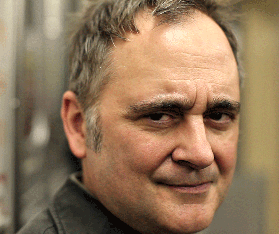Dan Ochiva writes for a select group of top feature film editors. He also runs a popular website, NYCPP: NYC Production and Post News, about film and video production and post-production technology, facility openings and people making film and video industry news in the New York City area.
To stay current with local events—and to stay ahead of industry trends, Ochiva says he searches just about everywhere for news and information. He uses ConceptDraw MINDMAP as a single interface to capture all of these disparate information types.
Hobie: How do you get started on a new article?
Ochiva: Before I start writing, I’ll do a combination of interviews and research. I might visit user forums to see what new issues are on people’s minds, and what’s happening in research and development. I check out industry groups that might be holding meetings or giving talks about future trends. As I go through all this stuff, I'll put it all into a mind map. With so many mixed types of information to deal with, mapping helps me pull it all together and make sense of it.
Hobie: How did you first find out about mind mapping?
Ochiva: I started out just trying to find a better way to manage information. That led me to reading about mind mapping. At first, I did my own version of it. I’d buy these big sketch books—two or three feet on a side—and tape sheets to the wall, and hand draw the maps. I worked that way for a few years, and it helped. But then mind mapping software came along.
Hobie: You wrote an article about storage and networking in film and video post-production. But you were telling me that since these are such big topics, you wanted to find a way to focus what you wrote to help readers get their brains around something so complex. How did mind mapping help you do that?
Ochiva: There’s a certain kind of insight that comes from using mind mapping. I think that's due to a combination of seeing relationships between things and from being able to see everything on one screen. In planning the storage and networking article, I could see at a glance that a lot of people were thinking and writing about how hard it was to get the technology to work with the rest of the editing suite. So that helped me see a trend that I could address in my article. Being able to spot a trend early on is a great skill for a journalist to have, and mind maps really help you see the connections that are leading to trends.
Hobie: So how do you go from mapping to writing?
Ochiva: I use ConceptDraw's built-in numbering capability to organize the different nodes of the map into something that’s more or less what I think the final article will develop into. Then I just export it out as an RTF file, and just go from there. And I find that this saves me time and frustration since I don’t have to go through so many iterations to get to the final structure.
Hobie: Do you see yourself continuing to use mapping?
Ochiva: Oh, yeah. There've been some major changes in the industry over the years. So there’s a lot of information to keep in your head, juggle, and pull together to make sense of new developments. Mind mapping is by far the best way I've found to keep information fresh and viable because I can organize all this information in a way that makes sense to me. Instead of having to review a big file I've created, I can just scan the map. And it's easy to drop new information and ideas into the map as they occur. At the same time, I can visually navigate to go deeper into any one section of the map if I want more detail.
Hobie: Do you think mapping is particularly well-suited to writers?
Ochiva: I think that mind mapping helps you bring form to the information you’ve gathered and the ideas that've come from it. Knowing that you can add structure to information and ideas, and that that structure will make sense to you in the future, that’s a great benefit to me as a writer—and a great relief.
Learn more about how the ConceptDraw product suite can focus and accelerate your thinking.







No comments:
Post a Comment